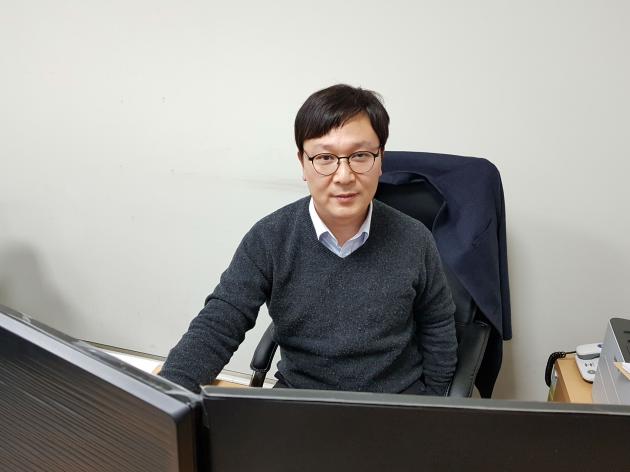People are living in many networks. They make friends and communicate them through social networking sites. Some have scores of friends in their networks but others, hundreds, and even thousands.
A network is not only a social term but a biomedical term. As little as genes, proteins, and cells to as big as diseases, there are networks in many different areas of biology. Network medicine refers to an academic field where scholars research a number of networks in the biomedical sector.
Han Hyun-wook, a professor at CHA University School of Medicine’s informatics medicine department, is one of the few network medicine experts in Korea. He has discovered networks and their interactions by analyzing big data in various fields such as genomic data and clinical data, leading network medicine in Korea.
After receiving his master’s degree in engineering from Seoul National University, Han was interested in medical informatics and entered CHA University School of Medicine.
Korea Biomedical Review met Han to learn how vital network medicine was and how to utilize it in the future.

Question: Network medicine is entirely new to ordinary people. What kind of study is it?
Answer: Network or Complex System is a study of the relationship between nodes and links. Network medicine is based on graph theory and statistical physics. It is a science that applies the theory of network science to the field of life sciences to discover genomes and proteins that cause diseases from a medical or biological point of view. The study deals with such diseases and interactions between diseases and drugs.
Q: Relationship seems to be a key in network medicine. There must be many kinds of relationship. How do you categorize them?
A: Having a unique attribute in a system is called an “object,” and relationship means a physical or logical connection between two objects. Therefore, it is critical to classify this connectivity in network medicine.
“Relationship” could be unilateral or mutual. A person called “A” may think he is close to “B,” but “B” might not think so.
What network medicine can miss out is the “time” of connectivity. In a human relationship, some take only a few hours to make friends, but others take years. In network medicine, researchers recently started to study the direction, strength, and time of intermolecular connectivity or connectivity between diseases.
Q: We learned that you had published your work in network medicine on Nucleic Acids Research and Scientific Reports, right?
A: We’re researching not only genome-level networks but clinical-level networks in a broad way. We have found an interesting result from genome-level networks that the features of the system of stress genes and those of the essential genes are mutually exclusive.
We also found that stress genes are highly related to disease, and that essential genes play a role in determining life and death.
This study implies that protein interaction networks represented by the existing essential genes cannot provide a fundamental answer to the very life phenomena of life and death, and disease and health.
Using big data of one million subscribers of the National Health Insurance Service, we developed a disease pathway network of Koreans. We used the clinical data to calculate the directionality between links of the disease, strength, and time.
By comparing disease network using clinical data with disease network using genomic data, we revealed the interrelationships of diseases that could not be found in genomic data.
Q: How do physicians use network medicine for patient care? Also, how can we utilize it further?
A: Network medicine is used to study mechanisms of DNA, RNA, and protein interactions. It is also used in developing data-based new drugs. It is widely used mainly for “drug repositioning,” a drug development methodology for finding new indications with existing drugs.
We can also use it to predict future diseases by studying past illnesses. Network medicine could give us a macro insight on how disease spreads from one person to others.
In the aspect of patient care, network medicine is expected to contribute to customized treatment via research on diseases’ interrelationship and the mutual relationship between drugs and genomes. In the end, it will help us realize precision medicine. Many researchers of network medicine should make clinical cases together in the future.
Q: What do we need to advance network medicine?
A: We need two things. What we need the most is quality data. There are too many pieces of knowledge in the world, but wrong data could mass-produce false knowledge.
It is also important to nurture experts of network medicine. There are many ways to analyze data, ranging from traditional statistics-based data analysis to data analysis using mathematical models and artificial intelligence (AI).
Nowadays, all the data analysis methods are converging to AI, but it is also essential to train professionals who can analyze big data through network analysis.
Q: What kind of advice would you give to future physicians who are interested in medical informatics?
A: I often tell young students to avoid fads. I didn’t set my study direction in the trends, either. I chose my field because it was fun and I thought I could invest my whole life in it.
It is very encouraging that many physicians are interested in medical informatics. Doctors who have the domain knowledge should enter this area and do research and business. However, if they fail to make compromises with reality, they could go back to where they used to be. They should be careful in choosing this field.

